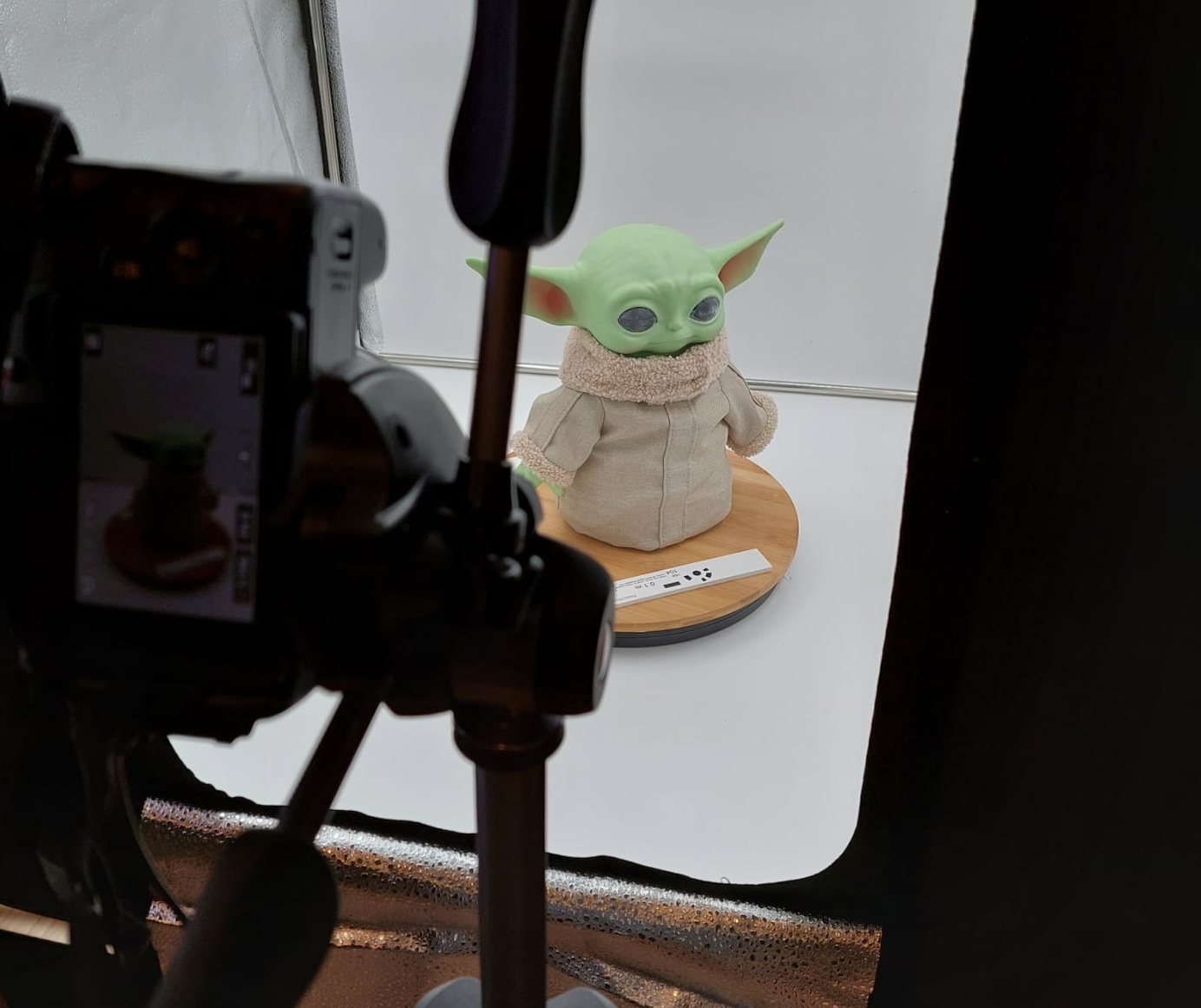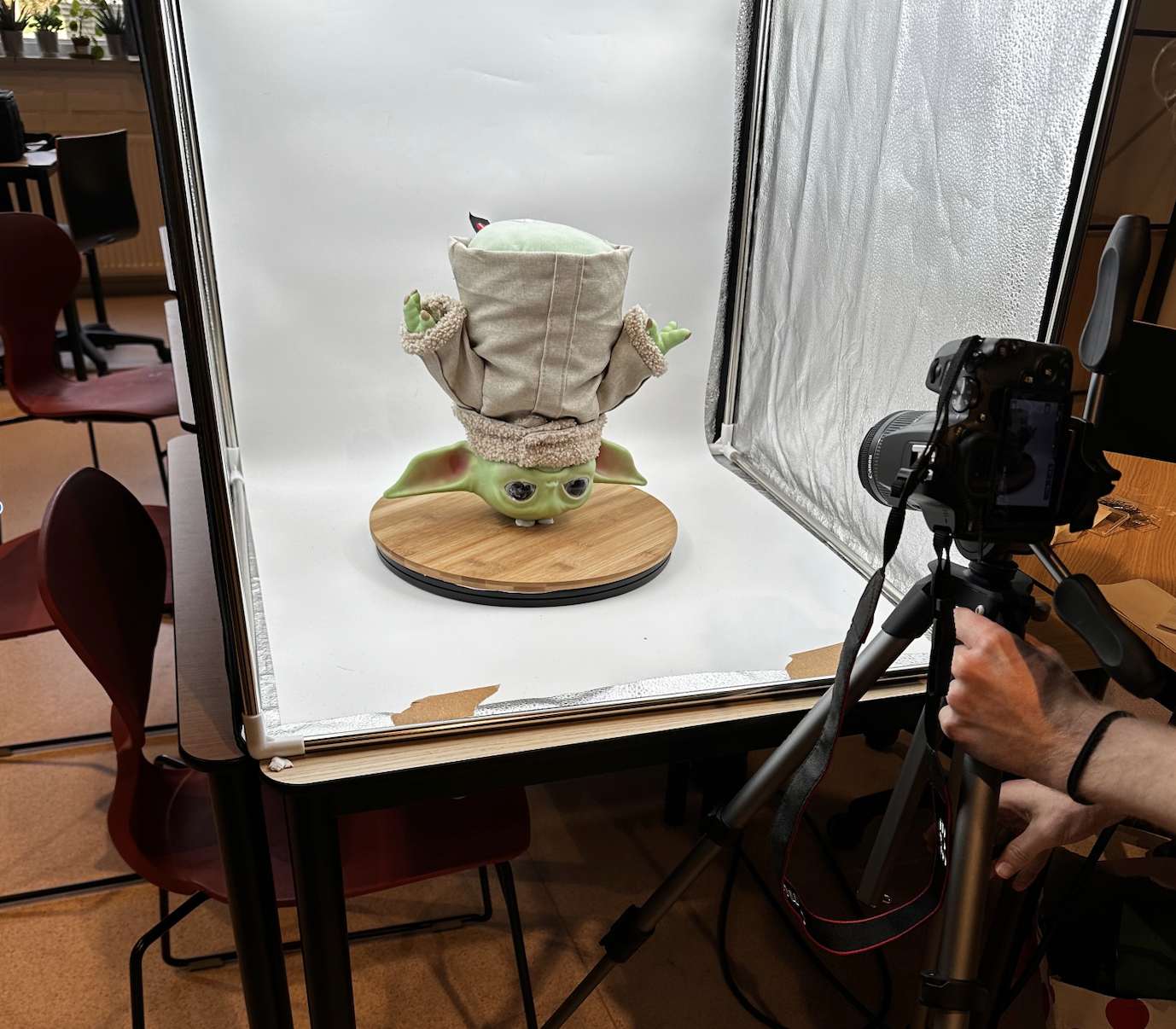
Our first steps into the 3D modeling of our toy began with Photogrammetry. Photogrammetry is a modeling technique that relies on the recording and measure of physical objects and environment through photographs, to generate information (Papadopoulos, n.d). The quality of our model was relying on important aspects from this technique. In order to obtain a model that is complete and precise, we needed to take close photographs of our toy, with a high percentage of overlap in between the images. Similarly, the lighting in the photographs was essential, and the object’s positioning could not be altered throughout the photographing session. Through the process, we learned to use basic photography skills, such as exposure time, F-Stop, and ISO, to capture better quality pictures.
During the first session, we already knew that the plush’s eyes were going to be problematic, as they are very glassy, reflective, and black. We knew that, once processed in the Metashape Software, they would not be visible. We decided to use baby powder, as a means to induce a matte effect. Once applied on the eyes, we could start taking pictures all around the toy. As a result, the eyes of our model are cloudy, with white particles. The plush was positioned in a lightbox, to allow for a homogenous and uniform lighting, and placed on a wooden plate in order to turn it without changing its position. The photographs were taken from three different angles, in order to capture every angle of the plush. We started by using markers, but quickly found that it would not work for our model.

After some deliberation, we decided to come back for another photographing session, in order to capture the bottom of the plush and get a wider perspective on the toy. In order to do so, we put the plush on its hard head, and placed sticky tacks on the bottom so it would stay stable as we turned the plate around. Unfortunately, while uploading the photographs onto the computer, we noticed that the white balance of the two sets of pictures was off. Indeed, while the first set seemed close to reality, the second set had a slight pink hue. Nevertheless, we decided to postpone the color correcting of the second set until after both sets have been merged.
